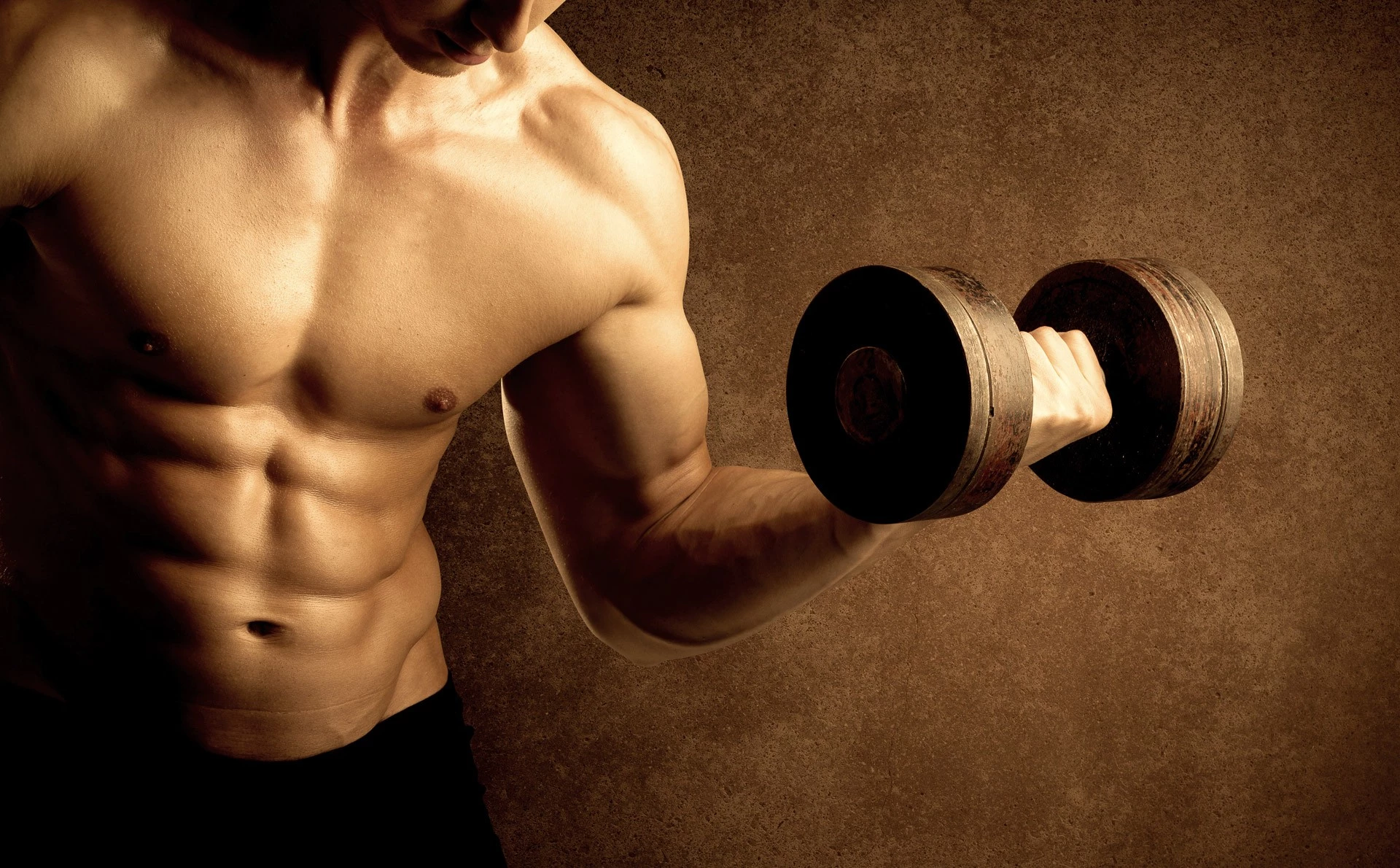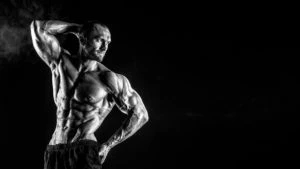How do muscles grow after exercise?

Newbies in the gym very often ask the question of how muscles grow after training, after how long the result will be visible in the mirror. In order to answer these questions, you must first figure out why it is so important not only to choose the right training program for yourself, but also to monitor adequate nutrition and recovery.
Any training, especially strength training, is a great stress for the body. Despite the fact that they provoke the release into the blood of such hormones useful for muscle growth as testosterone, somatotropin (growth hormone), they also actively stimulate the production of cortisol, which has a destructive effect on proteins (amino acids are actively used as a source of energy, and not carbohydrates or fats), that is, interferes with the synthesis of proteins in the body.
If the recovery is not correct (poor nutrition, short sleep, chronic fatigue at work), there can be no question of any muscle grow. Rather, on the contrary, the destruction of proteins in the body will begin. Therefore, before asking questions such as "why muscles are not growing", make sure that you are getting adequate recovery after training.

How to make muscles grow?
During strength training in the gym, muscle fibers are torn, resulting in microtrauma in the muscles. After some time, microtraumas heal and the muscles increase in size. The so-called supercompensation effect is observed, that is, when the muscles after training recovered to the previous level of fitness and exceeded it.
It is impossible to achieve the effect of supercompensation, that is, to make muscles grow, in one way, here all three factors must come together:
- Training program
- Nutrition
- Recovery
Each of these parameters is extremely important for muscle grow. For example, the basis, the basic framework for mass gain, is:
- high-calorie nutrition (the athlete must create an excess of calories in the body)
- adequate training program (alternation or periodization of light, medium and heavy training)
- good rest (minimum energy consumption and stress, as well as 8-9 hours sleep)
By increasing your level of fitness, you increase the body's ability to metabolize glycogen, creatine phosphate in muscles, and a number of other nutrients. Thus, supplying the body with "fuel", having a full rest and exercising regularly, you are guaranteed to make muscles grow.

Rest time between workouts
The optimal rest between sets in your programs for gaining mass should be 1.5-2 minutes. Rest between workouts from 1 to 3 days, but no more than 4 days, this time will be enough for you to rest, recuperate and not fall into distraction.
The choice of ± 1-2 days of rest between workouts should be based on whether the workout was or will be. That is, if you have done a high-power workout and you feel that your strength has not yet recovered (signs of increased irritation, pain in muscles and joints). Take yourself an extra break, thereby you will protect yourself from common overtraining. which often prevents the increase in muscle mass and strength results in any sport, not just bodybuilding.
How many workouts will I see the result after?
Before talking about the result that can be obtained from strength training, you need to decide what you expect from the gym:
- Muscle grow
- Increases in strength
- Drying, muscle relief
Losing weight is not included in this list, due to the fact that energy supply in strength training is due to the expenditure of muscle glycogen and creatine phosphate, which is why training in the gym is meaningless for burning fat.
If you have never played sports, or have been engaged, but for a very long time, and want to increase the muscles, but you will need from 1 to 2 years of regular exercise (3 workouts per week) for the body to transform, increase the size of muscle tissue. Much in this matter will be decided
- your body type,
- how well you will absorb nutrients,
- how strong are the tendons and ligaments to increase the working weights of the exercises,
- and, of course, how much dry muscle mass and fat you have.
- All these parameters directly affect the speed of obtaining results from training in the gym.
Drying muscles, working on relief, it is advisable for those athletes who already have significant muscle mass (not fat!), Through cardio exercises, in combination with a low-carb diet and strength exercises in a pump mode, you can achieve excellent results in 6-12 months.

What to eat to grow muscles?
Muscle growth is directly related to the processes of anabolism in the body, the creation of new high-molecular compounds, in our case, the synthesis of proteins (proteins). However, anabolism is always hindered by the processes of catabolism (destruction). Which under certain circumstances, which we will talk about below. They are able to jeopardize the entire result achieved in bodybuilding. Or even prevent beginners from progressing in the growth of strength and muscle mass.
As noted above, training is a strong stress, triggers the active production of the hormone cortisol. It is he who is responsible for catabolism, that is, for their destruction or the inability to increase muscles. However, in order to counteract it, there is one most powerful anabolic factor - nutrition.
Adequate nutrition during strength training
Adequate nutrition during strength training is the key to achieving powerful muscle mass.
It consists in the following:
Of course, it is very problematic to calculate the constant number of calories eaten and spent, so you need to adhere to simple rules that will easily provide you with the necessary conditions for muscle growth:
- Increase the number of meals to 5-6 (this can be a protein shake with banana or cottage cheese with sour cream)
- Eliminate empty, unhealthy calories from the diet (fast food, chips, soda, foods stuffed with preservatives, fried pies). They will not bring you anything other than lowering immunity and raising bad cholesterol
- Balance your diet (high-quality proteins, omega-3 fatty acids, complex carbohydrates, fruits, vegetables and herbs should form the basis of the menu)
- If you find it difficult to gain weight, buy a gainer, and protein and of course creatine will not interfere with it. This is the most useful supplement in the kit of a novice bodybuilder or strength worker
- Do not strive to increase the amount of protein per kg of body weight. It is enough to consume 2-2.2 grams / kg of protein (seafood, tuna, chicken eggs and whey protein are some of the best quality protein products). This is quite enough to create a positive nitrogen balance, that is, the conditions under which muscle growth possible
- Gain daily calorie intake mainly through the consumption of complex carbohydrates. Which gradually saturate the body with energy, preventing the excess from being deposited in the form of fat deposits.

Other general recommendation
The most important tool of any "pump" is his gym bag, which always contains clean water, protein shake, rice with chicken breast and eggs. Of course, not a lot of exaggeration, but you should grasp the point that the calorie content of foods, their usefulness, determine the processes of anabolism, muscle growth in the body.
There are no special food products for muscle growth, there are only general recommendations that have been outlined above. Proteins play a special role in the construction of new muscle structures. Therefore it is advisable to choose protein products with a high biological value, first of all:
- Seafood
- Whey Protein
- Chicken eggs
- Dairy products (cottage cheese, milk)
And of course, do not forget to be loaded with carbohydrates. Because they are consumed to a greater extent according to anaerobic glycolysis. There are few useful substances for the body from sweets, and besides. They are absorbed very quickly into the bloodstream, so we focused on complex ones:
Complex carbohydrates in foods:
- Buckwheat
- Pasta
- Potatoes
- Porridge
- Rye bread
- Corn
- Beans
- Peas
- Brown rice
Omega 3 fatty acids maintain blood vessels in a healthy state. They are especially important for those athletes who are on a steroid cycle, because the level of bad cholesterol rises several times on it.

Foods containing omega 3 fatty acids:
- Tuna
- Salmon
- Olive oil
- Avocado
- Flax seeds
- Pumpkin seeds
- Walnuts
After successful strength training, muscle grow doesn't end there, or rather, it hasn't even started yet. Only in the process of rest, recovery, consumption of nutrients, does the shift of biochemical balance towards anabolism begin. And as a result, start of synthesis of new muscle structures.